
|
As explained in our previous blog piece, during a three-week trip to China we had the opportunity to see how tofu is made in that country, where it originated. After our visit to a tofu-making site in the Guangxi region, we visited another in the province of Anhui. A five-hour ride on a high-speed bullet train took us from Shanghai to the Yellow Mountains, where we drove 30 minutes to Xuan Yuan farm. There we witnessed a slightly different way of making tofu (doùfu in Mandarin) from the way we had seen in Guangxi. The tofu-maker, Mr. Hu, showed us soybeans that he had been soaking for 8 hours (the process takes 12 hours in the winter). With a metal strainer, he scooped the beans out of a deep white bucket into a deep white plastic strainer. 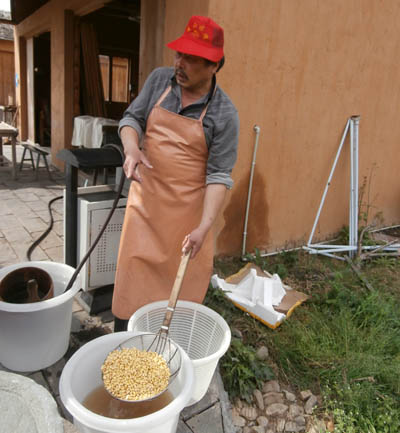 Using half a dried gourd, he scooped the soybeans into the top funnel of a grinding machine. 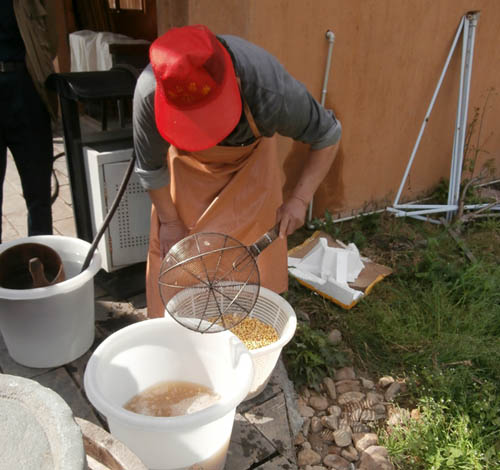 When he turned the grinder on, white liquid streamed out both sides. Next, Mr. Hu poured the white liquid into a cauldron, which he covered with two semicircular wooden lids. 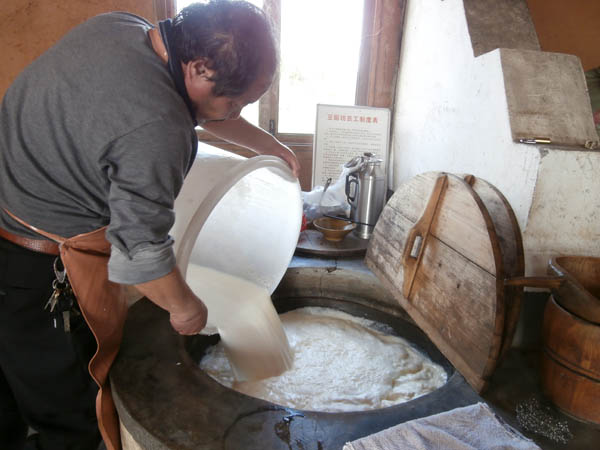 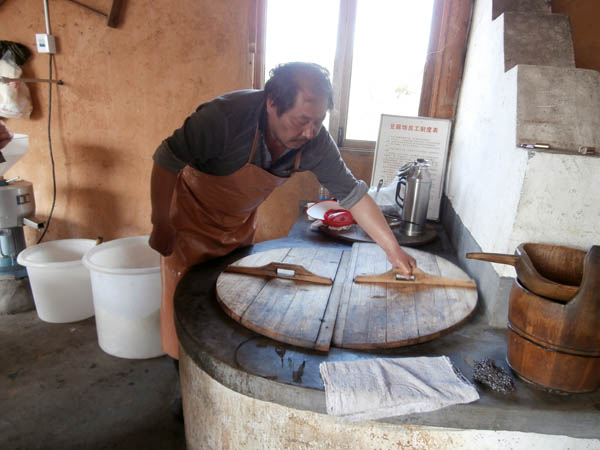 He added wood to the fire at the back of the stove and boiled the soybean milk for 40 minutes at 108 degrees Celsius. As the mixture boiled, we walked around the farm and enjoyed the sweet fragrance of the wisteria. We passed the farm’s chicken coop and were offered fresh eggs to purchase. We then walked into some of the hoop houses for growing vegetables. 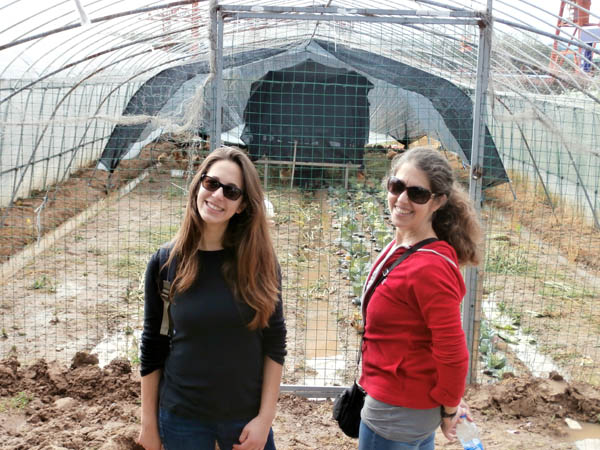 At the far end of the property, we walked along rows of peach trees and watched the farm’s 300 ducks waddle back and forth.  After we returned, Mr. Hu ladled the steaming hot tofu mixture into square wooden frames lined with cotton cheesecloth-like fabric. 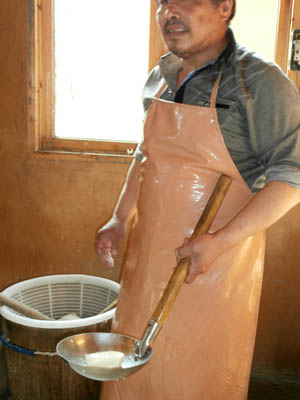 He poured some into paper cups for us to sample with spoonfuls of white sugar.  Mr. Hu gently folded the fabric over each wooden frame filled with the mixture, which looked like curds of cottage cheese. Once he had covered the frames, he removed the outside edge of each and stacked all three on top of each other. He lowered the overhead wooden beam to add weight and quicken the water drainage. Lastly, he cut up squares from the tofu he had made that morning and put four pieces in a small, clear plastic bag. We also sampled soy-sauce-marinated tofu that had been pressed by hand in cotton cloth into wafer-thin squares. The next evening, we enjoyed the fresh tofu in the spicy Szechuan style. We learned with delight that Mr. Hu wants to bring this way of making tofu to America. Posted By Karen Axelrod Sep 14, 2017
|
Archives2019 2018 2017 2016 2015 2014 2013 2012 2011 2010 2009 2008 2007 |